Accepted Scientific Name: Euphorbia umbellata (Pax) Bruyns
Euphorbia World 3: 5 2007
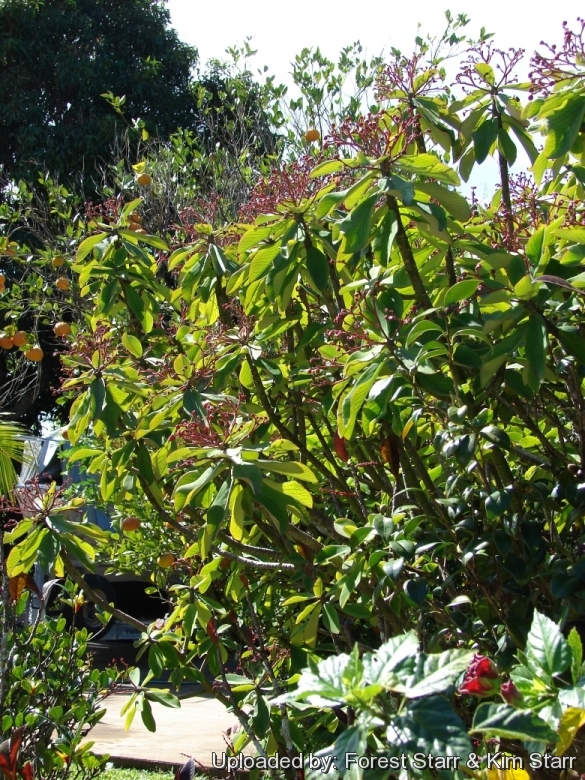
Synadenium umbellatum (Euphorbia umbellata) Photo by: Forest Starr & Kim Starr
Fruiting habit at Haiku, Maui, Hawaii (USA). January 11, 2007.
Origin and Habitat: Tropical Africa,Zambesi Valley, Malawi,West Kenya and Uganda South-wards on each side of Lake Tanganyika, but introduced and naturalized in many tropical and subtropical countries.
Altitude: 500-2100 metres above sea level.
Habitat: Rocky outcrops and exposed granite slopes, often also beside rivers, in dry open woodland or forests; often cultivated.
Synonyms:
See all synonyms of Euphorbia umbellata
back
Accepted name in llifle Database:Euphorbia umbellata (Pax) BruynsEuphorbia World 3: 5 2007Synonymy: 6
Cultivars
(1):
back
Common Names include:
ENGLISH: African Milk Bush, African Milkbush
SPANISH (Español): Carne de perro (Honduras)
Description: Euphorbia umbellataSN|23046]]SN|23046]] best known in cultivation as Synadenium grantiiSN|23048]]SN|23048]] is a thornless semi-succulent, evergreen shrub or small tree, erect, richly branched from near the base and in its habitat becoming up to 3,5(-10) m in height with an equal spread. It is widely grown in the tropics for its giant fleshy leaves as an ornamental and hedge or cover plant and under glass in colder regions.
Stem: Main stem up to 12 or 15 cm thick branching from the base, with the bark of the older parts pale greyish. Younger branches, round, cylindrical, terete, glabrous, exuding milky sap, rubbery green, purplish-green or wine-coloured, and somewhat fleshy, 8-20 mm thick becoming woody and thickening with age.
Leaves: Crowded at the tips, slightly alternate, simple, thinly fleshy, obovate, obovate-spatulate, or oblanceolate with obtuse, subacute or apiculate tip, 14-20 cm long and 2,5-7 cm wide sessile or gradually tapering from above the middle into a short stout petiole approximately 8 mm long, sparsely hairy towards the base, glabrous on both sides, reticulately veined with darker green with prominent midribs rounded beneath, uniformly green, paler beneath and often tinted with reddish on the prominent obtuse midrib. Margins entire or finely toothed towards the apex, flat or lightly wavy.
Inflorescences: Axillary and terminal, with 2 - 5 lax cymes, 7–15 cm long (including the 3-5 cm long peduncle), 5-10 cm broad, 2- to 6-forkedt hinly pubescent with spreading hairs on the upper part, glabrous below. Bracts 1 - 3 cm long, reddish-green subquadrate, very obtuse or subtruncate, entire, minutely pubescent.
Flowers (cyathia): Small and inconspicuous, bisexual or entirely male, broadly funnel-shaped or saucer-shaped, 6.5 mm in diameter, and 2 mm deep, brownish-red cyathia, in a small cup with a rim of nectar glands which are c. 1 mm wide, deeply furrowed and crimson pubescent on the basal part. Ovary puberulous, or pubescent. Lobes wholly overtopping the rim, glabrous. Perianth scarcely more than a mere truncate or minutely 3-lobed rim. Style 2 mm long connate at the basal half, deeply bifid above: Stigmas diverging-recurved.
Blooming season: Winter or early spring.
Fruits: 7 x 8 mm, pubescent, red, pedicel ± 5 mm long.
Seeds: Ovoid, 2.5 x 2 mm, minutely tuberculate, caruncle rudimentary.
Subspecies, varieties, forms and cultivars of plants belonging to the Euphorbia umbellata group
Bibliography: Major references and further lectures
1) Forest & Kim Starr “Synadenium grantii (African milkbush)”. Plants of Hawaii. <http://www.starrenvironmental.com>. Web. 27 Sep. 2014.
2) Umberto Quattrocchi “CRC World Dictionary of Medicinal and Poisonous Plants: Common Names, Scientific Names, Eponyms, Synonyms, and Etymology” (5 Volume Set) CRC Press, 03/May/2012
3) Nellie Neal “Gardener's Guide to Tropical Plants: Cool Ways to Add Hot Colors, Bold Foliage, and Striking Textures” Cool Springs Press, 15/Aug/2012
4) J. G. Baker, with additions by C. H. Wright. “Flora of Tropical Africa” Vol 6 1913
5) Urs Eggli “Illustrated Handbook of Succulent Plants: Dicotyledons” Springer Science & Business Media, 2002
6) George E. Burrows, Ronald J. Tyrl “Toxic Plants of North America” John Wiley & Sons, 15/Oct/2012
7) Wikipedia contributors. "Euphorbia grantii." Wikipedia, The Free Encyclopedia. Wikipedia, The Free Encyclopedia, 11 Mar. 2013. Web. 5 Oct. 2014.
8) Verdourt, Bernard; E.C. Trump and M.E. Church “Common poisonous plants of East Africa.” London: Collins. 1969
9) Govaerts, R., Frodin, D.G. & Radcliffe-Smith, A. “World Checklist and Bibliography of Euphorbiaceae (and Pandaceae).” 2000
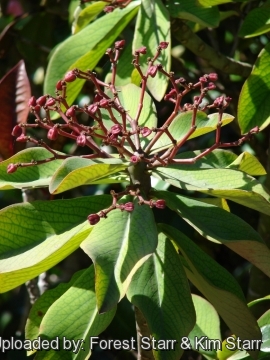 Fruits and leaves at Haiku, Maui, Hawaii (USA). January 11, 2007. (Euphorbia umbellata) Photo by: Forest Starr & Kim Starr
Fruits and leaves at Haiku, Maui, Hawaii (USA). January 11, 2007. (Euphorbia umbellata) Photo by: Forest Starr & Kim Starr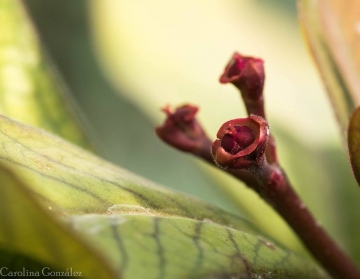 Synadenium umbellatum (Euphorbia umbellata) Photo by: Carolina González
Synadenium umbellatum (Euphorbia umbellata) Photo by: Carolina González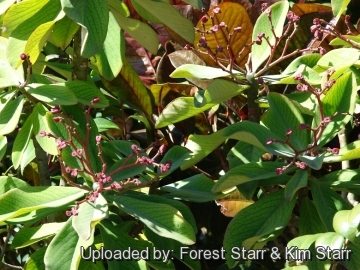 Fruits and leaves at Haiku, Maui, Hawaii (USA). January 11, 2007. (Euphorbia umbellata) Photo by: Forest Starr & Kim Starr
Fruits and leaves at Haiku, Maui, Hawaii (USA). January 11, 2007. (Euphorbia umbellata) Photo by: Forest Starr & Kim Starr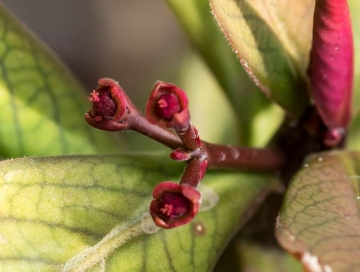 Synadenium umbellatum (Euphorbia umbellata) Photo by: Carolina González
Synadenium umbellatum (Euphorbia umbellata) Photo by: Carolina GonzálezCultivation and Propagation: Euphorbia umbellataSN|23046]]SN|23046]] (Synadenium grantiiSN|23048]]SN|23048]]) is very suited to growing on sunny terraces of warm areas need full sun to light shade with a very well drained soil mix with sand or perlite with small gravel added to ensure good drainage. Water them thoroughly and allow to dry before watering again. Fertilize the plants only once during the year with a balanced fertilizer.
Maintenance: The size of the plants is easily controlled by container size. The most important thing about growing these plants is be very careful not to over water them.
Propagation: Cutting and seed. The fresh cuts should be dipped in charcoal dust to stop the leaking of milky sap and should be struck in sand to root.
Warning: The latex is extremely irritant and can cause contact dermatitis. All plants parts are considered very poisonous. This one should not be grown around small children or animals that like to eat plants and be very careful to avoid the wounded surfaces when repotting or trimming up unwanted growth because of the corrosive milky sap.
Symptoms: Immediate or delayed irritation (burning, redness, blisters, swelling) to skin and eyes following contact with milky latex; ingestion causes irritation of lips, tongue, and throat.
Toxic Principle: Diterpene esters.
Severity: Highly toxic, maybe fatal if eaten. Skin irritation severe.














